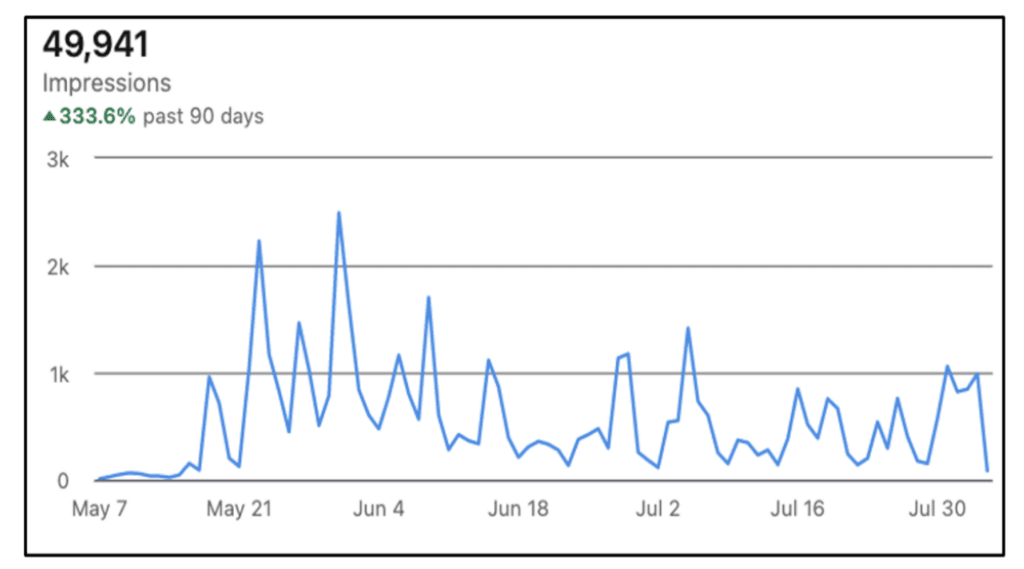In the dynamic digital marketing landscape, B2B, B2C, and D2C organizations seek new avenues to generate brand awareness. Enter thought leadership – a strategic approach to showcasing expertise, insights, and innovative perspectives that promote brand awareness, trust, credibility, and loyalty that can ultimately generate leads as a middle-of-the-funnel (MoFu) marketing tactic.
LinkedIn, stands out as a powerhouse for thought leaders. As the only social media platform catering to business-minded adults, LinkedIn’s 65 million decision-makers provide an opportunity for both professionals and the brands they represent. This blog discusses the purpose, benefits, and value of thought leadership on LinkedIn as a potent marketing opportunity.
Thought leadership on LinkedIn serves as a vehicle for professionals to share their knowledge and position themselves as authoritative figures. It’s an opportunity to establish the brands they represent as reputable, empowering, and beneficial to the reader. It goes beyond self-promotion, aiming to build trust, foster relationships, and engage with a diverse professional audience of potential customers by providing insightful information relevant to their interests.
The Value of Thought Leadership as a Marketing Opportunity
LinkedIn’s professional network allows thought leaders to connect with a targeted audience of business decision-makers. By showcasing expertise and aligning with business goals, thought leadership becomes a strategic marketing opportunity, allowing experts to amplify their impact. Establishing the thought leader as an industry expert with exceptional insight into trends and analysis while providing pain-point solutions helps them become the defacto influencer and ambassador for the brand.
Best practices by LinkedIn Thought Leaders
- Provide clear and concise insights by sharing valuable perspectives on industry trends, challenges, and solutions.
- Cover relevant and timely topics of interest for your target audience, such as industry news that establishes you as an industry expert, and bulletpoint and summarize information into digestible and actionable content.
- Incorporate personal anecdotes and experiences to humanize your content by sharing success stories, lessons learned, and case studies.
- Support your ideas with relevant data-driven content to add credibility as they resonate with a professional, business-focused audience.
- Respond timely and thoughtfully to comments on your posts, fostering a sense of community that builds relationships and trust in your brand.
- Offer fully written material as LinkedIn professionals seek information and expect thought leaders to provide insights within posts; do not just click the reshare button.
As a thought leader, you should avoid:
- Content that is overly promotional and self-serving, choosing to soft-sell your brand instead; thought leadership is not a hard sell and it may alienate the audience.
- Communicating in a way that is inaccessible to a broader audience by using an abundance of industry jargon.
- Inauthenticity: choosing instead to be genuine in your writing as it builds credibility and showcases your particular perspectives.
By incorporating these strategies and avoiding common pitfalls, you can create compelling thought leadership content on LinkedIn that resonates with your audience and establishes you as a credible authority in your field.
Tips for Aspiring Thought Leaders on LinkedIn:
For those interested in beginning their thought leadership journey, your first step is to establish a well-crafted profile page. It generates value and trust for those who find your page while helping with discoverability, ensuring the right target audience is being reached. Next, a content niche and target audience must be thoroughly researched to determine a suitable focus for your content. Once those have been secured, balancing self-promotion with value-driven content provides the formula for generating a content calendar that will prompt interest and offer users exceptional, empowering subject matter that establishes you as a thought leader in your vertical.
LinkedIn Thought Leadership Key Performance Indicators and Case Study:
The essential performance metrics for LinkedIn thought leadership are Impressions, Engagements, New Followers, and Profile Views.
- Impressions signify the frequency with which your content is displayed to individuals, tailored to their interests and industry.
- Engagements play a pivotal role in helping the platform assess the appeal of your content to the targeted audience, with content that generates engagement receiving increased impressions.
- Profile Views offers insights into those viewing your profile, including their numbers and the industries they represent.
- New Followers serves as an indicator of your establishment as a recognized thought leader within your professional community.
Engagements lead to Impressions, Impressions lead to Profile Views, and Profile Views lead to New Followers. New followers see your content automatically.
The rate of increase in thought leadership KPIs is relative to the frequency and quality of content being published historically. For someone randomly resharing their brand’s posts, indicator performance charts can be, well, “off the charts” once a regular cadence of actionable, useful, and empowering thought leadership content begins publishing.
In the example below, a well-established executive with over 20 years in his industry who was a casual platform user began publishing regularly scheduled thought leadership content. Immediately, there was a significant lift in the number of people seeing his content, learning about the brand he represents, asking him questions about his opinions and the work he does, viewing his profile, and following him.

Conclusion
Thought leadership on LinkedIn is not just a buzzword; it’s a strategic approach with tangible, measurable benefits. As the digital landscape evolves, professionals can leverage the power of LinkedIn to position themselves as thought leaders, leaving a lasting impact on their followers, industries, and the brands they represent. So why wait? Reach out to us, and let us show you the value we can create for you and your business through LinkedIn thought leadership!
